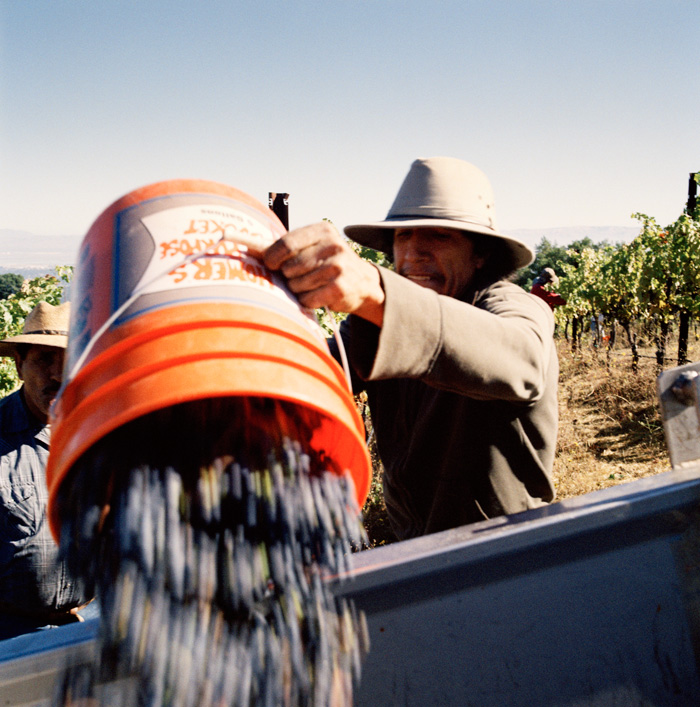Are blends best? Nay
Author: Adam Bruntlett

Photograph: Jason Lowe
I write this piece 10 days into a six-week stay in Burgundy, during which time I will be tasting up and down the Côte d’Or, visiting each of our suppliers’ cellars, often several times. As those with a cursory knowledge of Burgundy will know, the range of grape varieties here is limited; the vast majority of wines are made from Pinot Noir or Chardonnay, with the occasional appearance from Gamay or Aligoté. Over the course of my stay here I will write hundreds of tasting notes, all of which will cover wines made from a single grape variety. Colleagues often ask whether I get bored of essentially tasting the same two varieties over and over. My answer is always “no”. The sheer range of styles and expressions a Pinot Noir or Chardonnay can produce, just within this modestly-sized region of France, is beyond comprehension. Even within a single village or vineyard, one grower’s style can vary massively from that of his neighbour. Why would anyone need to adulterate these wines with the addition of other varieties?
Not only this, but I think there is much to say for a region finding its signature grape variety; the inexplicable alchemy of combining a single grape variety with a single terroir and microclimate, to produce a wine which shows typicity of both grape and origin. Why add further to the mix and risk diluting the purity of expression of the grape? In Burgundy this is taken to the limit; with the same Pinot Noir or Chardonnay grape being grown in rows side by side, yet producing wildly different results for any number of reasons. Simply blending in another variety is not the only, and certainly not the best, way of adding interest and differentiating one’s wine. The vast array of tools at the winemaker’s disposal, both in the vineyard and the winery, can all add to the grape, which is after all, but a small part of the equation.
One cannot forget that the majority of the world’s greatest wines are single-varietals; whilst the obvious choices for me as a Burgundy specialist are the Pinot Noirs and Chardonnays of the Côte d’Or, I have a huge passion for German Riesling from the Mosel, Saar and Rheingau, whilst some of the greatest, oldest and most breath-taking wines I have ever drunk have been Vouvrays and Bonnezeaux, both made from Chenin Blanc. Italy’s finest wines are arguably the Nebbioli of Barolo. Sancerre and Sauvignon Blanc are synonymous. In the New World single varietals have found their homes; Sauvignon Blanc in New Zealand, Malbec in Argentina, Zinfandel in California, Cabernet Sauvignon in Napa and Coonawarra, Barossa Shiraz, Clare Valley Riesling. All over the world, people have found a variety that works in a region, and made incredible, characterful wine with a unique identity and sense of place.
The purpose of multi-varietal blends is frequently to even out the variations between vintages and minimise any possible deficiencies in one grape’s performance in a certain year. If, for instance, in Châteauneuf-du-Pape, the Grenache suffers from coulure (as it often does, and as it did in 2013), the Mourvèdre, Syrah and others remain to bulk the wine out. Not only does this mean the style of the wine can vary significantly from vintage to vintage depending on the composition of the blend, it also allows winemakers the opportunity to hide any faults. With one single variety, there is no hiding place, and the character of the vintage is really allowed to shine.
There is logic to why certain varieties are grown in certain regions; over time, often many hundreds of years, winemakers have experimented with different varieties in different regions, aiming to understand what works and what doesn’t. Whilst in some regions – such as Bordeaux, the Southern Rhône or Rioja – no single variety has been identified as the perfect match, it is clear that on the whole, there is an inherent partnership between grape and soil. It just works. And when it does, it is as close to perfection as you can get.


